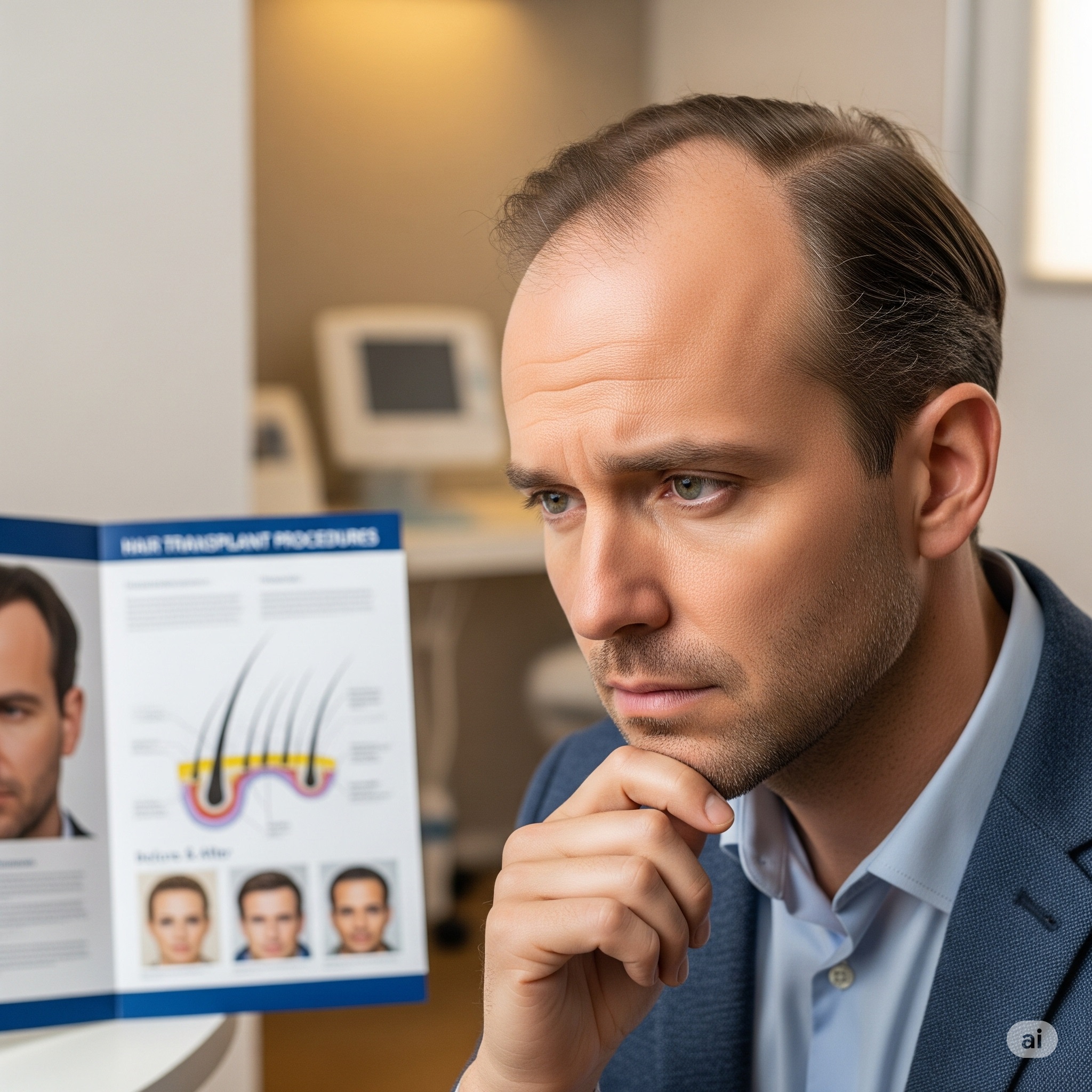
Q1: What is the minimum age for a hair transplant?
A: Most surgeons recommend waiting until at least 25 years old to ensure stable hair loss patterns.
Q2: Can hair transplants be performed on women?
A: Yes, women with thinning hair or patterned baldness can undergo hair transplantation.
Q3: Does hair transplant surgery hurt?
A: Local anesthesia minimizes pain, though mild discomfort may occur during recovery.
Q4: How long does a hair transplant procedure take?
A: Depending on graft numbers, it can last between 4 to 10 hours.
Q5: Are hair transplant results permanent?
A: Transplanted hair is generally permanent, though natural hair loss may continue.
Q6: Can transplanted hair be cut and styled normally?
A: Yes, once healed, transplanted hair behaves like natural hair.
Q7: How many grafts are usually needed for a receding hairline?
A: Typically 1500–2500 grafts, depending on severity.
Q8: Is hair transplant suitable for alopecia areata?
A: No, autoimmune conditions like alopecia areata are not ideal candidates.
Q9: Can hair transplants be combined with PRP therapy?
A: Yes, PRP can enhance healing and graft survival.
Q10: How soon can patients return to work after surgery?
A: Most return within 5–7 days, depending on swelling and comfort.
Q11: What is the donor area in hair transplantation?
A: It is the region, usually at the back of the scalp, where hair follicles are harvested.
Q12: What is the difference between FUT and FUE?
A: FUT removes a strip of scalp, while FUE extracts individual follicles.
Q13: Which technique leaves fewer scars?
A: FUE leaves tiny dot scars, while FUT leaves a linear scar.
Q14: Can body hair be used for transplantation?
A: Yes, beard or chest hair can be used if scalp donor hair is insufficient.
Q15: Is robotic hair transplantation available?
A: Yes, robotic systems assist in precise follicle extraction.
—
Q16: How long does swelling last after surgery?
A: Swelling usually subsides within 3–5 days.
Q17: When can patients wash their hair after transplant?
A: Gentle washing is allowed after 48–72 hours.
Q18: Is itching normal after hair transplant?
A: Yes, itching is common during healing and subsides within a week.
Q19: Can patients wear hats after surgery?
A: Loose hats can be worn after 5–7 days.
Q20: How long until transplanted hair starts growing?
A: New hair growth begins around 3–4 months post-surgery.
Q21: What factors affect hair transplant cost?
A: Technique, graft numbers, surgeon expertise, and location.
Q22: Are hair transplants cheaper in medical tourism destinations?
A: Yes, countries like Turkey and India offer lower costs.
Q23: Do clinics charge per graft?
A: Many clinics charge per graft, while others offer package pricing.
Q24: Can hair transplant costs be tax deductible?
A: Generally no, as it is considered cosmetic.
Q25: Are follow-up visits included in the cost?
A: Some clinics include them, others charge separately.
Q26: Can transplanted hair fall out permanently?
A: Initial shedding is normal, but permanent loss is rare.
Q27: Does hair transplant affect brain function?
A: No, it only involves the scalp surface.
Q28: Can hair transplant be done after chemotherapy?
A: Yes, once hair loss stabilizes and health permits.
Q29: Is hair transplant safe for diabetics?
A: Yes, with proper medical clearance and controlled diabetes.
Q30: Can hair transplant be done for burn scars?
A: Yes, if scar tissue has adequate blood supply.
Q31: Can patients dye transplanted hair?
A: Yes, after full healing, usually 6–8 weeks post-op.
Q32: Does smoking affect hair transplant results?
A: Yes, smoking reduces blood flow and graft survival.
Q33: Can alcohol consumption affect recovery?
A: Yes, alcohol may slow healing and increase swelling.
Q34: Is exercise allowed after hair transplant?
A: Light exercise after 10 days, heavy workouts after 3–4 weeks.
Q35: Can patients swim after hair transplant?
A: Swimming is safe after 3–4 weeks.
Q36: How long do hair transplant results last?
A: Transplanted hair lasts a lifetime, though natural hair may thin.
Q37: Can hair transplant stop future baldness?
A: No, it restores lost hair but does not prevent future loss.
Q38: Do transplanted hairs grow at the same rate?
A: Yes, they grow like natural hair.
Q39: Can hair transplant improve confidence?
A: Yes, many patients report improved self-esteem.
Q40: Are touch-up procedures common?
A: Yes, some patients need additional sessions for density.